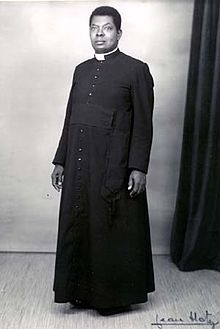This article needs additional citations for verification. (November 2022) |

| Part of a series on |
| Western dress codes and corresponding attires |
|---|
|
Legend:
|
The cassock, also called soutane, is a Christian clerical clothing coat used by the clergy and male religious of the Oriental Orthodox Churches, Eastern Orthodox Church and the Catholic Church, in addition to some clergy in certain Protestant denominations such as Anglicans and Lutherans. "Ankle-length garment" is the literal meaning of the corresponding Latin term, vestis talaris. It is related to the habits traditionally worn by nuns, monks, and friars.
The cassock derives historically from the tunic of classical antiquity that in ancient Rome was worn underneath the toga, and the chiton that was worn beneath the himation in ancient Greece. In religious services, it has traditionally been worn underneath vestments, such as the alb.
In the West, the cassock is little used today except for religious services, save for traditionalist and those other Catholic clergy and religious who continue to wear the cassock as their standard attire. However, in many countries it was the normal everyday wear of the clergy until the 1960s, when it was largely replaced by clerical suits, distinguished from lay dress by being generally black and by a black shirt incorporating a clerical collar.
In Japan, male gakuran school uniform were inspired by cassocks.[citation needed]